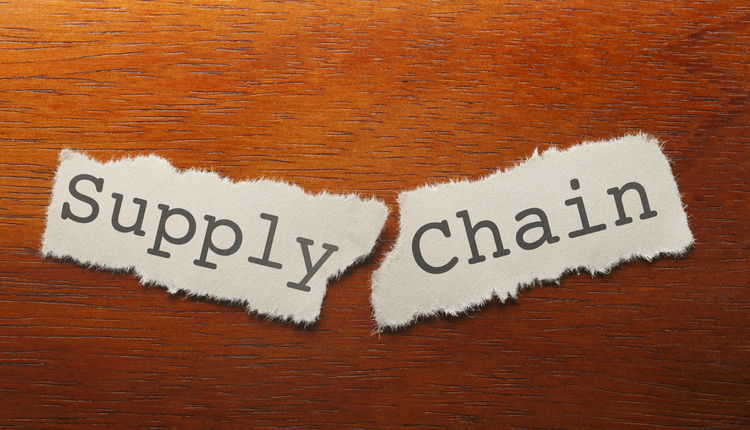US warehousing space is at the tightest it's ever been as shippers import record amounts of inventory to satisfy existing customer demand and have on hand “just in case.” Real estate investment trust, Prologis, ended the first quarter, the period ending March 31, at a 97.4% occupancy, flat to the fourth quarter of 2021, counter to the typical first-quarter decline.
Prologis CFO Tim Arndt said on its April 19 earnings call, "supply chains have yet to return to normal as measured by in-stock rates, equipment lead times, and active dialogue with our customers. While the flow of goods has improved, the inventory to sales ratio remains more than 10% below pre-pandemic levels, and inventories need to make up for this 10% and build an incremental 10% in safety stock."
As shippers rebuild and stock up on inventories, where to store the goods is becoming an issue – warehouses across the US are full. Expanding warehouse networks is expensive and available land is often at a premium as shippers desire to move closer to customers for faster last-mile deliveries.
Instead of building out, some shippers are building up. Multilevel warehouses are common in densely populated areas of Asia, and they are now gaining popularity in the US. This is partly because property developers are challenged with providing industrial real estate in some of the biggest consumer markets in the country.
In 2018, the first multistory warehouse was built in the US, located in Seattle for Amazon. Since then, Amazon has announced plans to build up to 11 multistory robotics warehouses in such locations as Colorado Springs, Nashville, and California's Inland Empire. But multilevel warehouses may be cost-prohibitive for small and medium-sized shippers.
Flexible warehousing is another option for shippers. Third-party logistics providers often provide such a service on behalf of their customers and a growing number of startups such as STORD, Flexe, ShipHero, and ShipBob. Flexible warehousing solutions often include a host of technology solutions that allow shippers to manage their inventories by smartphone and/or computer.
In addition, a growing number of these solutions are also offering last-mile delivery services. Speed is often an important part of these providers, many of which focus on e-commerce fulfillment.
Microfulfillment facilities are small-scale warehouse facilities in densely populated urban locations closer to the consumer to improve delivery times. According to research from Interact Analysis, about 7,300 automated microfulfillment centers (MFCs) will be installed by 2030, up from just under 86 installed at the end of 2021.
Instacart and Walmart have recently announced they would add MFCs to their networks. Walmart will utilize some of its stores as MFCs, and in other locations, the fulfillment centers will be added to stores. Its first market fulfillment center opened in Salem, New Hampshire, in late 2019.
According to Walmart, inventory is kept separate from the rest of the store, with automated bots retrieving items within the fulfillment center. The items are then brought to a picking workstation, where the order can be assembled with speed.
Empty storefronts are also turning into MFC space as shippers move closer and closer to customers, particularly in densely populated locations. However, one interesting example, typically not associated with densely populated areas, is Tanger Factory Outlet Centers' partnership with Fillogic, a logistics-as-a-service platform. In 2021, the two teamed up to create what is described as tech-enabled micro-distribution hubs to drive convenient delivery and return processes. These hubs offer various shipping services, including same-day delivery for local residents and one-stop shopping, allowing customers to drop online returns on-site.
The need for inventory space will not disappear anytime soon. "Even if retail sales declined 5% as consumers shift their spending to experiences versus goods, we project that the market will still require an incremental 800 million sq ft of space in the US alone," Prologis' Arndt said.
Utilizing existing space will be an important part of shippers' strategies and other creative ideas to keep the flow of inventories moving in supply chains and to consumers' front doors.
With over 25 years of supply chain experience, John Haber has helped some of the world’s leading brands drive greater efficiencies through their supply chain operations while reducing transportation, distribution and fulfillment costs. After a successful UPS career, John founded Spend Management Experts, now part of Transportation Insight. He uses his finance background combined with decades of experience working with high-volume shippers to offer unique insights on strategic supply chain planning including distribution model optimization, transportation cost analysis, and carrier contract optimization and compliance.
This article originally appeared in the May/June, 2022 issue of PARCEL.













